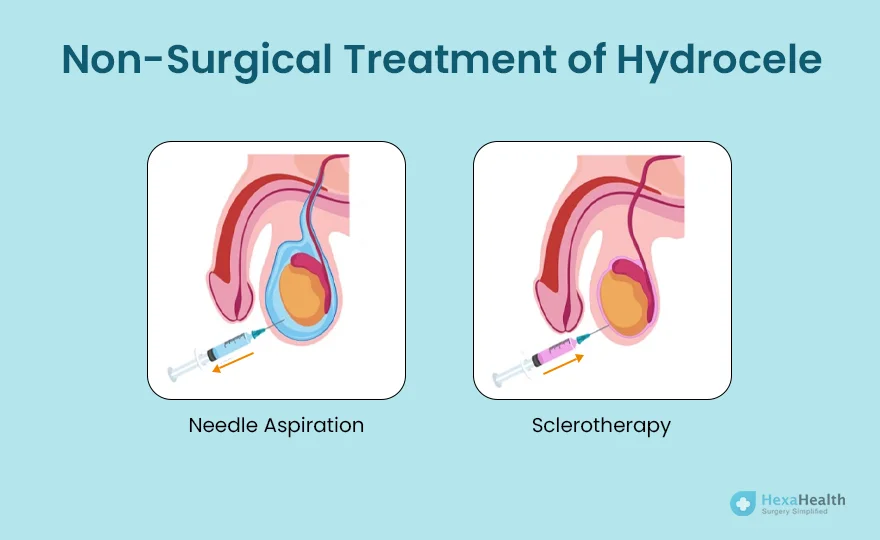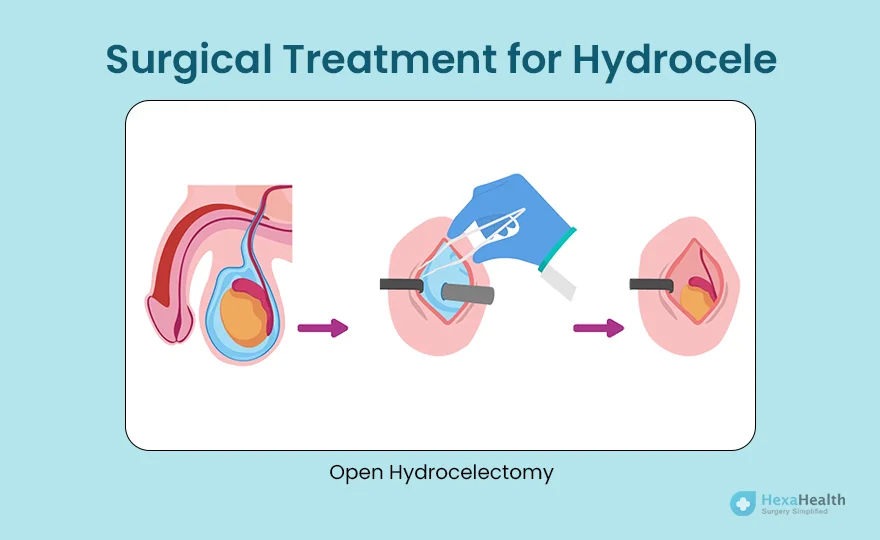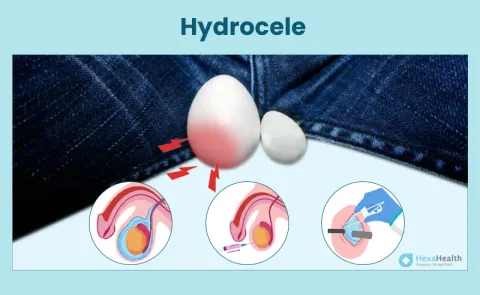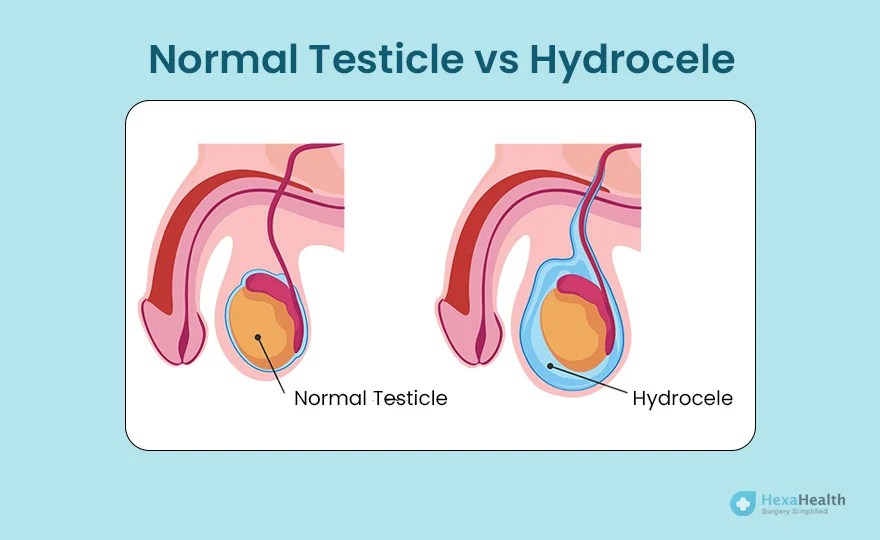Whenever there is any issue in the body, one always look for non-surgical treatments or home remedies to treat the problem.
Although many men tend to hide or feel hesitant to discuss their problems because of the embarrassment. But you need to understand that hydrocele is just another health issue that requires proper treatment without making any fuss about it.
So, if you are also suffering from the hydrocele problem right now, here are some effective hydrocele treatment options for you. It will release your tension to know that surgery is not the only option to treat hydrocele.
Home Remedies
Home remedies are natural remedies or treatments that can be done at home using readily available ingredients to alleviate common health problems.
Some of the home remedies that may help are as follows:
- Ice Pack: Applying a cold compress to the affected area can help reduce swelling and discomfort. Wrap some ice in a towel and apply it to the scrotum for about 15 minutes at a time.
- Supportive Underwear: Wearing supportive underwear, such as a jockstrap, can help reduce discomfort and provide support to the scrotum.
- Elevation: Elevating the affected area while sitting or lying down can help reduce swelling.
- Warm Bath: Taking a warm bath or using a warm compress may help alleviate discomfort and reduce swelling.
- Epsom Salt: A hydrocele's discomfort, soreness, and pain can be efficiently relieved by taking an Epsom salt bath twice or three times per week. Additionally, it improves blood flow to the area around the scrotum.

Dietary Changes
Dietary modifications refer to making changes to one's diet in order to improve overall health and address specific health conditions.
Hydroceles can be treated in many ways. However, you should also remember that your diet plays an important role in improving your symptoms. Our diet has a direct impact on our health.
Some dietary modifications that may be helpful for individuals with hydrocele include:
- Maintain a Healthy Diet: Foods rich in vitamins, minerals, and antioxidants that can strengthen your immune system and reduce inflammation in the body. Eating a variety of colourful fruits and vegetables can also help reduce your risk for other health conditions, such as heart disease and cancer.
- Avoid Processed and High-Fat Foods: Processed foods often contain high amounts of sodium, sugar, and unhealthy fats, which can contribute to inflammation and other health problems. Instead, choose whole, nutrient-dense foods that are low in added sugars and unhealthy fats.
- Turmeric Tea: Turmeric has anti-inflammatory properties that may help reduce swelling associated with hydrocele. Mix 1 teaspoon of turmeric powder with a glass of warm milk and drink it daily.
- Ginger: Anti-inflammatory properties of ginger can also help in reducing swelling. Drink ginger tea or add fresh ginger to your food.
- Apple Cider Vinegar: It has been utilised for several medical conditions over the years, including hydrocele. Drink a glass of warm water with 1-2 teaspoons of apple cider vinegar every day.

Lifestyle Modifications
Physical activity is as important as any healthy diet. Lifestyle changes refer to modifications in one's daily habits and activities that can promote overall health and well-being.
Some lifestyle changes that may be beneficial for individuals with hydrocele include:
- Staying Hydrated: Constipation, which may lead to hydroceles and other health issues, can be avoided by drinking enough water and other fluids. Constipation can also assist keep your body hydrated.
- Weight Management: Maintaining a healthy weight can help reduce the strain on the body and promote circulation, which can be helpful for managing hydrocele.
- Avoid Tight Clothing: Wearing tight clothing, particularly around the groin area, can worsen swelling and contribute to the development of hydrocele.
- Avoid Heavy Lifting and Strenuous Activities: These activities can put a strain on the body and contribute to the development or worsening of hydrocele.
Non-Surgical Treatment of Hydrocele
In the case of hydrocele non-surgical treatments may not eliminate the hydrocele completely, but they can be useful in reducing inflammation and improving circulation in the body, which can help reduce the swelling associated with the condition.
Some of the non-surgical treatments that can help in the treatment of hydrocele are as follows-
Needle Aspiration:
- In patients who cannot tolerate surgery, aspiration can be done.
- Aspiration is a less invasive procedure that involves using a needle to drain the fluid from the scrotum. However, this procedure is not a permanent solution, and the fluid may accumulate again.
- The accumulated fluid is removed via a needle in this technique. However, the fluid within the hydroceles often recollects in a week or so.
- There is also a risk of haematocele and infection after aspiration.
- If the hydrocele gets enlarged again, surgery to remove the hydrocele (hydrocelectomy) is recommended by doctors.
Sclerotherapy: In this procedure, the surgeon injects a chemical solution into the sac that produces the fluid, causing it to shrink and eventually close off. This procedure is only effective for non-communicating hydroceles.
Surgical Treatment for Hydrocele
Normally, non-surgical treatments may help to reduce the symptoms of hydrocele but they can not cure it completely. There is always surgical methods to treat hydrocele.
When hydrocele becomes complicated or symptomatic, surgery is the option recommended by doctors.
For infants, the surgery focuses on sealing the processus vaginalis, which should have closed on its own before birth. However, surgery is preferred for adult men when the hydrocele's swelling is embarrassing and painful.
It can also be done when the hydrocele grows to a size that threatens the function of the rest of the genital tissues.
Surgical Approach for Hydrocele Treatment
- Open Hydrocelectomy: This is the most common type of surgery for hydrocele. Open Hydrocelectomy involves making an incision in the scrotum and draining the fluid. The surgeon then removes the sac that is responsible for producing the fluid. This type of surgery is effective for both communicating and non-communicating hydroceles.

- Hydrocele laser surgery or laser-assisted hydrocelectomy involves using a laser to make a small incision in the scrotum to drain the fluid. During the procedure, a small fibre optic laser is inserted through a tiny incision in the scrotum. The laser energy is then used to make a small hole in the sac that contains the fluid. The fluid is drained out of the sac and the hole is then sealed using laser energy.

Cost of Hydrocele Surgery
The first thought that may come to mind while considering the surgery is the cost. The price of the surgery varies on multiple factors like the choice of hospital, type of surgery, etc. The cos of hydrocele surgery are as follows:











































